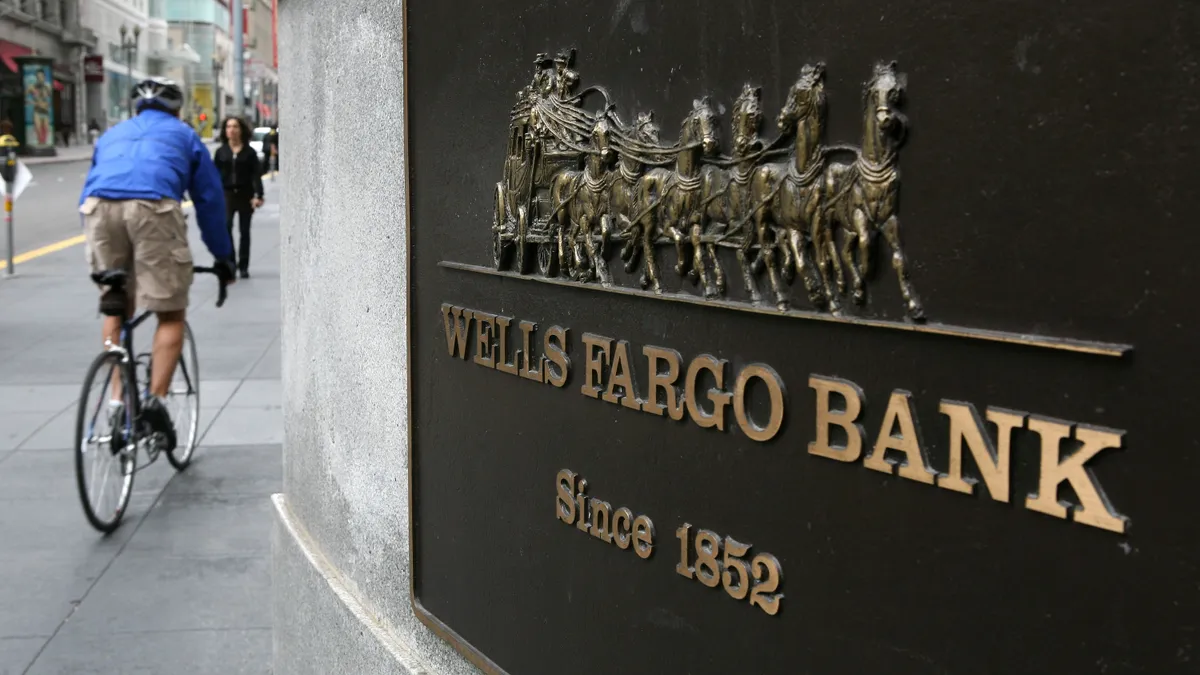Dive Brief:
- Wells Fargo is streamlining its mortgage business, a shift that involves focusing on existing customers and nonwhite communities, the bank said Tuesday in a release.
- As part of the bank’s new “strategic direction,” Wells Fargo said it will also exit its correspondent lending business, a unit of the bank that buys loans from third-party lenders. “These plans continue the work the company has advanced over the past three years to simplify this business,” the bank said.
- The bank’s decision to shrink its mortgage lending operation will come with a new round of layoffs, bank executives acknowledged, while declining to share any figures, according to CNBC.
Dive Insight:
Wells Fargo’s decision to step back from mortgages marks an identity shift for the San Francisco-based bank, which, as recently as 2019, was the nation’s top home lender with $201.8 billion in volume, according to data from Inside Mortgage Finance.
The move is hardly a surprise. The lender has initiated hundreds of job cuts in its home-lending division since April, as it contends with rising interest rates that have quelled consumer demand for mortgages and refinancing.
“Mortgage is an important relationship product, and our goal is to continue to be the primary mortgage lender to Wells Fargo bank customers as well as minority homebuyers,” Kleber Santos, the bank’s CEO of consumer lending since July, said Tuesday. “We are making the decision to continue to reduce risk in the mortgage business by reducing its size and narrowing its focus.”
The home-lending market has been dismal over the past year. Revenue for Wells Fargo’s home-lending segment dropped 52% in the third quarter, and mortgage originations fell by 59% year-over-year as of Sept. 30, according to HousingWire.
“We are making adjustments to reduce expenses in response to lower origination volumes, and we expect these adjustments will continue over the next couple of quarters,” Wells Fargo CFO Mike Santomassimo said in July.
That same month, Wells Fargo CEO Charlie Scharf said the bank was “in the process of changing, strategically, where mortgage fits in.”
“We’re not interested in being extraordinarily large in the mortgage business, just for the sake of being in the mortgage business,” Scharf said. “We’re in the home lending business because we think home lending is an important product for us to talk to our customers about, and that’ll ultimately dictate the appropriate size of it.”
The bank’s home-lending practices have sparked controversy, too. Wells Fargo came under fire last March, when a Bloomberg analysis found the bank approved 47% of refinance applications from Black homeowners in 2020 but 72% from White borrowers. The bank boosted its acceptance rate in 2021, to 58% of Black mortgage refinancing applicants. But the figure for White borrowers also increased, to 79%, leaving a 21-percentage-point gap.
Tuesday’s statement addresses that shortfall.
“As the largest bank lender to Black and Hispanic families for the last decade, we remain deeply committed to advancing racial equity in homeownership,” Santos said.
The bank announced Tuesday that it would invest $100 million to advance racial equity in homeownership. The initiative includes strategic partnerships with nonprofit organizations and community-focused engagements.
Wells Fargo said it would also deploy additional home mortgage consultants to branches in nonwhite communities, and added that it expects to make ongoing investments in racial equity in the years to follow.
“We will continue to expand our programs to reach more customers in underserved communities by leveraging our strong partnerships with the National Urban League, UnidosUS and other non-profit organizations,” Kristy Fercho, head of Wells Fargo home lending and head of diverse segments, representation and inclusion, said in a statement. “We also will hire additional mortgage consultants in communities of color.”
Scharf, for one, has been leading an effort, since at least 2020, to review Wells Fargo’s business model, cutting units that are seen as “non-core” and embarking on periodic but substantial rounds of job cuts.
But a series of consumer abuses, starting with the bank’s 2016 fake-accounts scandal, have put the bank, including its mortgage-lending practices, under regulatory scrutiny in recent years.
The Consumer Financial Protection Bureau (CFPB) last month hit the bank with a record $3.7 billion settlement over a slew of practices, including its handling of mortgages.















